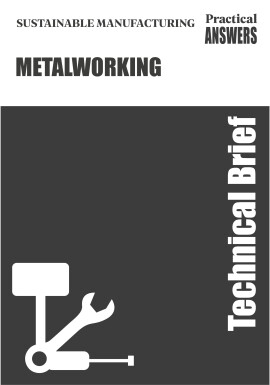
Hot-dip Galvanizing
A guide to process selection and galvanizing practice
The demand for more durable fasteners to extend the life of equipment such as fishing vessels makes this illustrated introduction to hot-dip galvanizing an invaluable addition to the bookshelves of works managers, engineers, government officials and field project officers.
Hot-dip galvanizing is a cost-effective method of protecting cast iron or steel components from corrosion by coating them in zinc, thereby increasing the life of nuts, bolts and other items normally exposed to the elements.
The first section of this book describes wet, dry and ‘old dry’ processes of hot-dip galvanizing, including health and safety, principles and benefits, equipment, materials, power supply, maintenance and quality control. The processes are illustrated with flow diagrams and there are tables to compare the relative benefits of the different options.
The second section covers the specification and costing for a galvanizing plant once the market requirements have been established and the best method has been selected.
Published: 1995
Pages: 80
eBook: 9781780442334
Paperback: 9781853391903
Hot-dip galvanizing is a cost-effective method of protecting cast iron or steel components from corrosion by coating them in zinc, thereby increasing the life of nuts, bolts and other items normally exposed to the elements.
The first section of this book describes wet, dry and ‘old dry’ processes of hot-dip galvanizing, including health and safety, principles and benefits, equipment, materials, power supply, maintenance and quality control. The processes are illustrated with flow diagrams and there are tables to compare the relative benefits of the different options.
The second section covers the specification and costing for a galvanizing plant once the market requirements have been established and the best method has been selected.
| CHAPTER I. SOCIO-ECONOMIC EFFECTS OF ALTERNATIVE PAPER | |||
|---|---|---|---|
| MANUFACTURING TECHNOLOGIES; THE CASE FOR MINI | |||
| PAPER MILLS 1 | |||
| I. INTRODUCTION 1 | |||
| II. DEMAND, PRODUCTION AND TRADE 3 | |||
| III. DEFINITION OF SMALL SCALE IN PAPER MANUFACTURE 4 | |||
| IV. SOCIO-ECONOMIC EFFECTS OF ALTERNATIVE | |||
| PAPER-MAKING TECHNOLOGIES 5 | |||
| V. GUIDELINES FOR GOVERNMENT ACTION 15 | |||
| CHAPTER II. CHARACTERISTICS OF PAPER PRODUCTS 17 | |||
| I. PRODUCT RANGE 17 | |||
| II. PAPER AND BOARD GRADES 20 | |||
| III. WRAPPING AND PACKAGING GRADES 22 | |||
| IV. TESTING OF PAPER AND BOARD . 26 | |||
| CHAPTER III. RAW MATERIALS AND ADDITIVES 29 | |||
| I. FIBRE SOURCES 29 | |||
| II. CHEMICALS 34 | |||
| CHAPTER IV. PULP PRODUCTION TECHNOLOGIES 37 | |||
| I. CHEMICAL PULP PRODUCTION 37 | |||
| II. CHEMI-MECHANICAL PULPING 52 | |||
| III. SEMI-MECHANICAL PULPING 55 | |||
| IV. CHEMICAL RECOVERY 55 | |||
| V. EFFLUENT DISPOSAL 62 | |||
| VI. STOCK PREPARATION 63 | |||
| V I I . STOCK CONTROL 83 | |||
| CHAPTER V. THE PAPER MACHINE 87 | |||
| I . PAPER PRODUCTION 87 | |||
| I I . THE BOARD MACHINE 102 | |||
| CHAPTER V I . METHODOLOGICAL FRAMEWORK FOR ESTIMATING | |||
| UNIT PRODUCTION COSTS 109 | |||
| I . THE METHODOLOGICAL FRAMEWORK 109 | |||
| I I . APPLICATION OF THE METHODOLOGICAL FRAMEWORK 112 | |||
| I I I . COST DATA FOR INDIAN MILLS 120 | |||
| APPENDICES | |||
| I ; LIST OF EQUIPMENT MANUFACTURERS 127 | |||
| II : EUROPEAN LIST OF THE STANDARD QUALITIES OF WASTE PAPER 139 | |||
| I I I : BIBLIOGRAPHY 143 | |||
| IV : SELECTED RESEARCH AND DEVELOPMENT INSTITUTIONS 145 | |||
| V ; GLOSSARY OF TERMS AND ABBREVIATIONS 147 |





